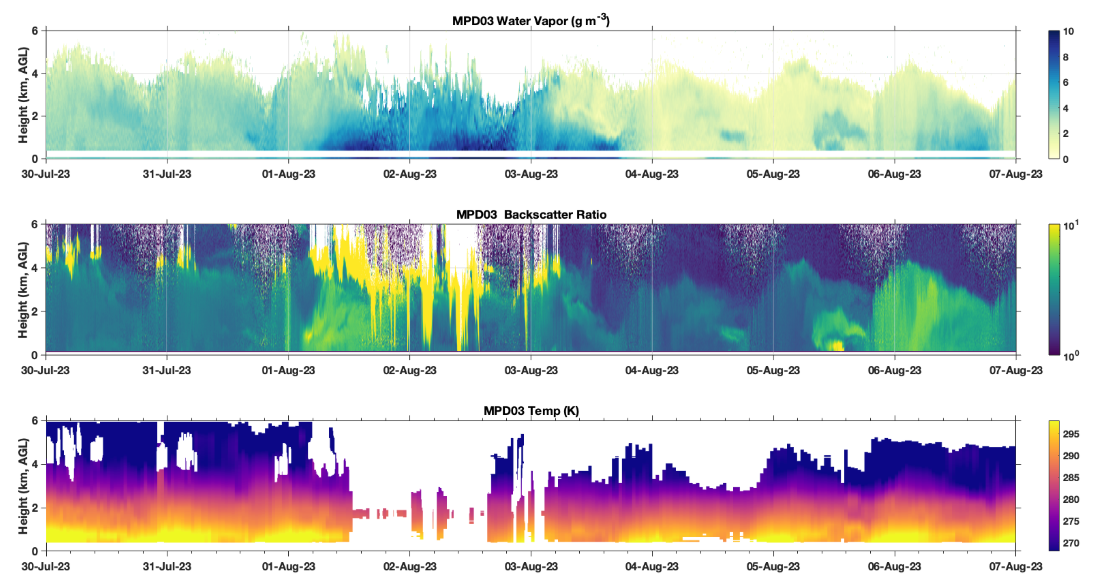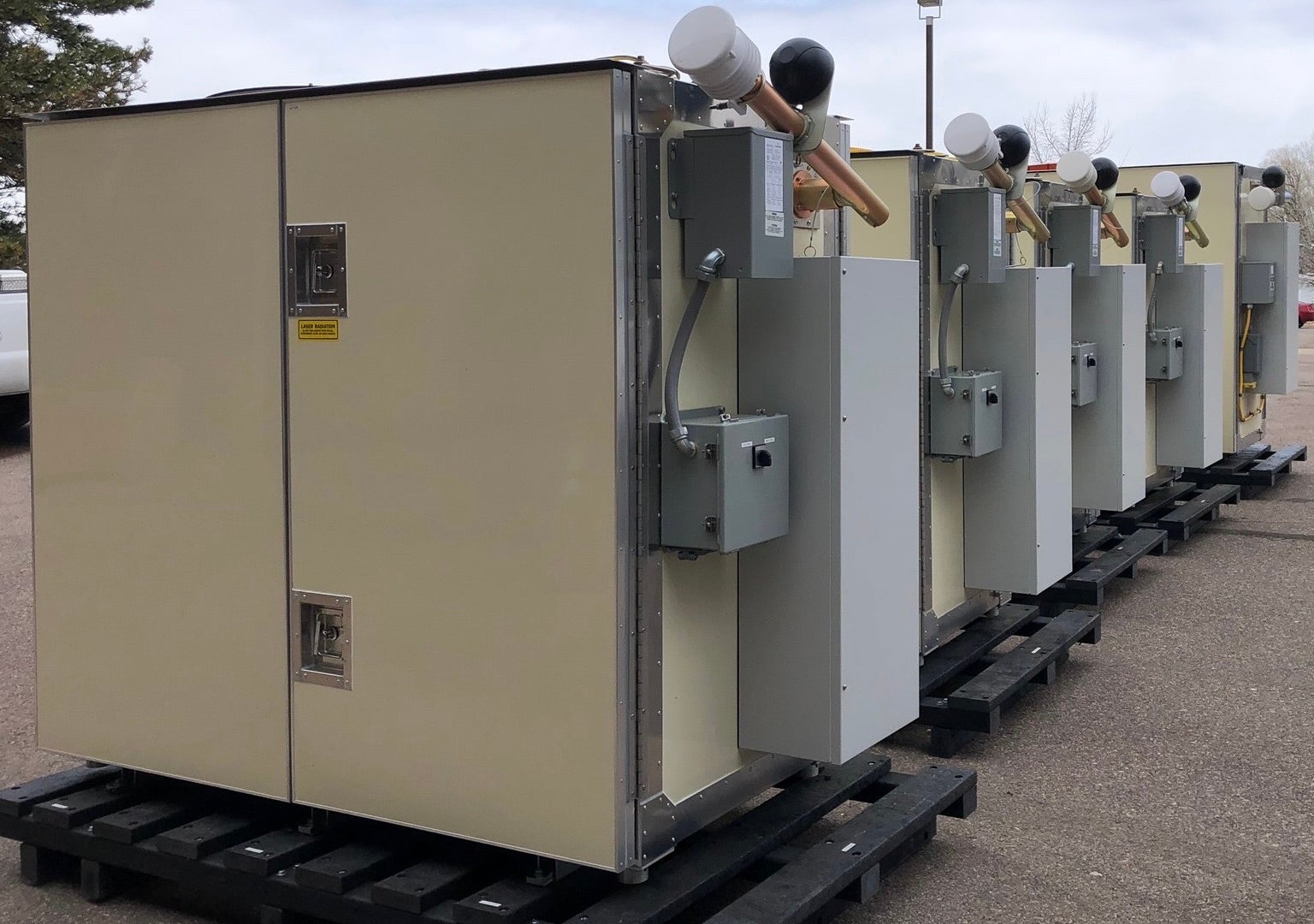MicroPulse DIAL (MPD)
The MicroPulse DIAL (MPD) is a compact, field-deployable, eye-safe lidar for continuous unattended monitoring of water vapor, temperature, and aerosols in the lower troposphere. The "MicroPulse" designation indicates the use of low power laser pulses. The acronym DIAL refers to the differential absorption lidar technique, which utilizes the absorption of light at specific wavelengths to quantify atmospheric constituents. In essence, the MPD emits pulses of laser light into the atmosphere and, by examining the backscattered radiation, subsequently derives information about the atmospheric state. A network of five units exists for research – advancing knowledge in a variety of areas, including boundary layer thermodynamics, convection initiation, and land-atmosphere exchange.
MicroPulse DIAL absolute humidity, backscatter ratio, and temperature profiles from the M2HATS field campaign
Photo of the 5 MPDs (Apr 2019)
A multifunction DIAL/HSRL: The MicroPulse DIAL integrates three lidar subsystems in one unit. A water vapor DIAL measures absolute humidity, a High Spectral Resolution Lidar (HSRL) measures calibrated aerosol backscatter coefficient, and an oxygen DIAL measures temperature. These techniques provide accurate and calibration-free measurements requiring a minimal set of assumptions.
Networkable DIAL: Several design features enabled the first network of DIAL for thermodynamics. The diode-laser-based architecture has distinct benefits: the lasers are considerably more compact, reliable, and less expensive than typically used for lidar instrumentation. The transmitted laser beam is eye-safe and invisible (Class 1M). For high-quality daytime operation, suppression of the solar background is achieved with a narrow receiver field-of-view and extremely narrow-band optical filters. The received light is measured with single photon counting detectors.
Specifications
| Parameter | Specification | |||
| Nominal Wavelengths | 828 nm, 770 nm | |||
| Pulse length | 0.6 μs to 1.0 μs | |||
| Nominal Pulse Energy | 5 µJ | |||
| Pulse repetition rate | 7-9 kHz | |||
| Receiver Field of View | 100 µrad | |||
| Receiver bandpass | 10-20 pm (FWHM) | |||
| Vertical resolution | 150 m | |||
| Vertical range | 250-4000 m | |||
| Temporal resolution | 2-sec sample resolution 1-40 min variable dependent |
|||
Contact
NCAR/EOL MPD Team. (2018). MicroPulse DIAL (MPD). UCAR/NCAR - Earth Observing Laboratory. https://doi.org/10.5065/d6st7nkg.

